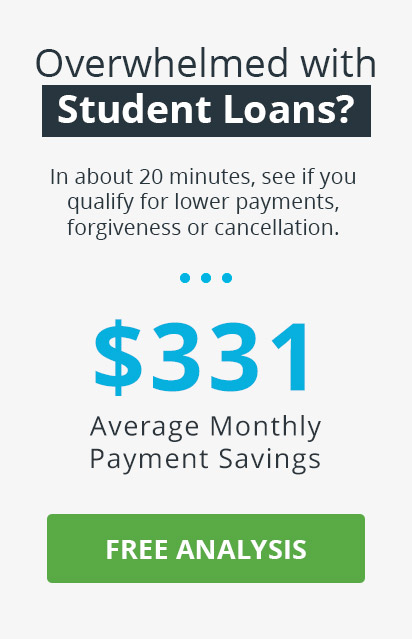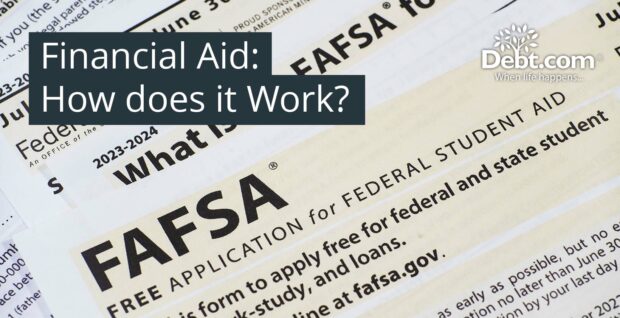
A Direct Parent PLUS Loan is a federal loan designed to help parents cover their dependent undergraduate child’s education costs. The current interest rate for a parent-plus loan is 7.54%, which is higher than other federal student loans. These loans have a fixed interest rate, ensuring consistent monthly payments and protection from market fluctuations. The applicant must be the biological or adoptive parent of a student enrolled at least half-time at an eligible school. The applicant must not have an adverse credit history and must meet general federal financial aid criteria to comply with the parent plus loan eligibility criteria. Parent plus loans are applied for separately after the student submits the FAFSA, with funds disbursed directly to the school to cover tuition and associated expenses.
Table of Contents
What is a Parent PLUS Loan?
A Parent PLUS Loan is a federal student loan offered by the U.S. Department of Education to help parents or legal guardians finance their child’s undergraduate education. Unlike other federal student loans, Parent PLUS Loans require a credit check and are not available directly to students. The Direct PLUS Loan is the only federal student loan parents are eligible to obtain for their dependent child. These parent loans for college cover up to the total cost of attendance, minus any other financial aid received, and have standardized interest rates and fees. The current interest rate is 8.05%, and the loan fee is 4.228%.
Repayment typically begins immediately after disbursement, but deferment options are available. Parents benefit from federal protections and income-driven repayment plans, though these require loan consolidation. A parent student loan impacts the parent’s credit, making it essential to manage repayment carefully. Parent borrowers are solely responsible for repaying Direct PLUS loans, with a standard repayment plan of 10 years. These loans help alleviate the financial burden of making college more affordable.
How Does a Parent PLUS Loan Work?
A Parent PLUS Loan works by helping parents or guardians to finance their dependent undergraduate student’s education. Parents apply for the loan separately after the student submits the Free Application for Federal Student Aid (FAFSA). The Department of Education disburses the loan directly to the student’s school for educational expenses like tuition, fees, room, and board, with any unused funds given to the student for other qualified expenses.
Parent PLUS Loans have a fixed interest rate of 8.05% and a loan fee of 4.228%. They do not offer subsidized interest and require immediate repayment unless deferment is requested. An Income-Contingent Repayment (ICR) plan is available if the loan is consolidated, and the loan is eligible for Public Service Loan Forgiveness (PSLF) if consolidated. However, the higher interest rates and fewer repayment options make Parent PLUS Loans more costly, and default leads to severe consequences, such as wage garnishment.
What is the Importance of Understanding Parent PLUS Works?
Understanding how Parent PLUS Loans work is crucial for parents considering them to finance their child’s education due to the specific terms, benefits, and potential financial pitfalls. Parent PLUS Loans are federal loans allowing parents to borrow up to the total cost of their child’s education minus other financial aid. These loans carry the risk of substantial debt accumulation, as they help cover significant financial gaps. They are not subsidized, so interest begins to accrue immediately upon disbursement and continues even if the loan is deferred. The fixed interest rate is 8.05% as of July, generally higher than other federal student loans, and there is an origination fee of 4.228%.
Repayment options for Parent PLUS Loans include Public Service Loan Forgiveness (PSLF) and Income-Contingent Repayment (ICR), but only if the loans are consolidated into a Direct Consolidation Loan. These options are challenging to qualify for and manage, especially for parents with higher incomes or nearing retirement. Defaulting on these loans leads to severe consequences such as wage garnishment and tax refund withholding, highlighting the federal government’s extensive collection powers compared to private lenders.
Parent PLUS Loans are taken out in the parent’s name, meaning they are responsible for the debt, not the student. It impacts the parent’s financial stability and retirement plans, emphasizing the importance of evaluating the ability to repay before borrowing. Understanding these aspects helps parents make informed decisions, avoid overborrowing, and consider alternative financing options, such as private loans or encouraging their child to take loans in their name, which often come with lower interest rates and more extended repayment periods.
How does a Parent PLUS Loan differ from other Types of Federal Student Loans?
A Parent PLUS Loan differs from other types of federal student loans in five ways. First, Parent PLUS Loans are designed specifically for parents or legal guardians of dependent undergraduate students, making them solely responsible for repayment, unlike Direct Subsidized and Unsubsidized Loans, which students take out.
Second, Parent PLUS Loans have a higher interest rate of 8.05% for the 2023-2024 academic year compared to 5.50% for Direct Subsidized and Unsubsidized Loans. They come with an origination fee of 4.228%, increasing the total cost of borrowing.
Third, Parent PLUS Loans require a credit check to ensure the borrower has no adverse credit history, such as defaults or bankruptcies. Most other federal student loans do not have such requirements, making them more accessible.
Fourth, Parent PLUS Loans offer more limited repayment options. Income-contingent repayment (ICR) requires that these loans first be consolidated into a Direct Consolidation Loan. Direct Subsidized and Unsubsidized Loans are repaid under various income-driven plans, including Pay As You Earn (PAYE), Revised Pay As You Earn (REPAYE), and Income-Based Repayment (IBR).
Lastly, Parent PLUS Loans provide federal benefits such as deferment, forbearance, and Public Service Loan Forgiveness (PSLF) eligibility if consolidated and repaid under an ICR plan. These features offer valuable protections for borrowers facing financial difficulties or working in public service roles. Understanding these differences is essential for making informed decisions about financing education.
When is the Best Time to Get a Parent PLUS Loan?
The best time to get a Parent PLUS Loan is after exploring all other financial aid options and understanding the child’s remaining financial needs. The process begins with the student completing the Free Application for Federal Student Aid (FAFSA), which opens on October 1 each year (delayed until December for the 2024-25 school year). The FAFSA provides access to low-cost funding options such as subsidized and unsubsidized student loans, Pell Grants, and work-study opportunities. Determine the remaining financial gap after maximizing these options and researching scholarships and grants.
Parent PLUS Loans cover the total cost of attendance minus any other financial aid. Calculate the amount carefully, noting that a school’s estimated cost is higher than necessary. Encourage the child to reduce costs by living at home, buying secondhand books, and avoiding unnecessary expenses. Parents must apply for a Parent PLUS Loan through StudentAid.gov once the remaining financial need is clear. It ensures borrowing only what is necessary and utilizing all available resources. Understand the loan’s terms, including the fixed interest rate, origination fee, and repayment options. Compare with private loans, which offer better terms but typically lack the flexible repayment plans and forgiveness options of federal loans.
What do Parent PLUS Loans Cover?
Parent PLUS Loans cover the following listed below.
- Tuition and Fees: The cost of attending classes and any associated institutional fees is included.
- Books and Supplies: Parent PLUS loan funds are used to acquire textbooks, course materials, and other essential supplies.
- Miscellaneous costs: The cost of attendance, as defined by the educational institution, encompasses any additional expenses.
- Transportation: Assists in paying transportation expenses, including payments associated with commuting.
- Personal Expenses: These cover personal expenses associated with the student’s education, such as purchasing a computer or other educational technology.
What are the Advantages of Parent PLUS Loans?
The advantages of Parent PLUS loans are listed below.
- Flexible repayment schemes: Parent PLUS loans, like numerous other federal loans, provide various repayment options, such as standard, extended, and graduated plans. PLUS borrowers qualify to consolidate their loan into a direct consolidation loan, which entitles them to income-contingent repayment (ICR), one of the four income-driven programs.
- Fixed Interest Rates (Not Credit-based): PLUS loans necessitate a credit check for approval; however, the interest rate is uniform for all applicants. The exact rate applies to borrowers with fair and outstanding credit scores.
- Loan Forgiveness possibility: Parent PLUS loans, like other federal loans, are eligible for forgiveness programs, such as Public Service Loan Forgiveness (PSLF). Parent PLUS loans are forgiven provided that the borrower fulfills the eligibility criteria, which include working for an eligible employer and making 120 qualified installments. The remaining balance is forgiven after 25 years of repayment if a borrower enrolls in ICR.
- Borrow up to the Cost of Attendance: Parent PLUS loans cover the cost of attendance after other aid has been applied, even though subsidized and unsubsidized loans limit the amount borrowed. It eliminates borrowers’ need to obtain additional forms of loans, such as private student loans, in the future.
- Defer repayment until post-graduation: Payments usually must be made while the child is in school, but parents get to wait as long as their kid is enrolled at least half-time. Request a deferment upon filing the parent PLUS loan application.
What are the Benefits of Using a Parent PLUS Loan Calculator?
Using a Parent PLUS Loan calculator offers three significant benefits for parents considering borrowing to fund their child’s education. Firstly, Parent PLUS Loan calculator helps estimate monthly payments and total repayment amount, including interest, which is essential for effective financial planning. Inputting loan amounts, interest rates, and origination fee gives parents a clear idea of their financial commitment. The tool shows how much of the borrowed amount remains for the school after deducting the origination fee, avoiding surprises when funds are disbursed.
Secondly, the calculator aids in making informed decisions about loan repayment strategies. For example, it demonstrates how making more than the minimum monthly payment reduces the overall interest paid and shortens the loan term. It helps identify options to lower monthly payments if the initial amount is too high, offering flexibility in managing finances.
Thirdly, the calculator supports comparing Parent PLUS Loans with other financial aid options, such as private loans. It evaluates the cost-effectiveness of borrowing under different scenarios, enabling parents to choose the most affordable option. The Parent PLUS loan calculator provides an overview of repayment over the loan term, helping to avoid potential financial pitfalls like loan default, which leads to wage or Social Security garnishment.
Combining the calculator with a student loan refinance or consolidation calculator is crucial when refinancing or consolidating loans. The comparison reveals potential savings and optimal repayment plans, making the calculator a versatile and indispensable resource for managing student loan debt effectively.
What are the Disadvantages of Parent PLUS Loans?
The disadvantages of Parent PLUS loans are listed below.
- High Interest Rates and Fees: Parent PLUS loans are the most expensive loans available at the federal level, with the highest interest rates and fees. Direct subsidized and unsubsidized undergraduate loans for the 2022-23 academic year have a 4.99% fixed interest rate and a 1.057% loan distribution charge. PLUS loans are subject to a 7.54% rate and a 4.228% fee.
- Accrues Interest during Deferment: Student loan deferment is an excellent opportunity for debtors to avoid paying for a loan while attending school. Students who are enrolled at least half-time in school continue to accrue interest. Deferring the loan results in a larger loan accumulating interest over time if a borrower opts for deferment. The loan amount is likely to have increased significantly from the amount a borrower initially borrowed by the time they commence making payments.
- A Credit Check is necessary: Parent PLUS loans are subject to a credit check, unlike federal loans. An adverse credit history prevents a borrower from getting approved. It includes negative information on their credit report within the past five years, such as multiple delinquent debts, debt in default, wage garnishment, foreclosure or repossession, tax liens, or bankruptcy discharge of debt. However, applicants must still apply if they have adverse credit. Appeal the decision to qualify potentially if not approved due to extenuating circumstances.
- Borrow up to the Cost of Attendance: It is helpful for most students, but taking advantage of it does cost them, so it’s both pro and con. Certain debtors withdraw an excessive amount without a limit, resulting in a subsequent increase in repayment expenses (including interest). Only borrow the amount necessary to cover a child’s education expenses to ensure that future repayments are manageable.
- Grace Period not guaranteed: Other federal student loans commence repayment with a grace period; however, PLUS loans do not. The borrower must contact their loan servicer to establish a grace period after the student has graduated. Repayment is required immediately if the child’s enrollment falls below half-time or they graduate.
- Minimal Repayment Choices: Parent PLUS loans, while eligible for some student loan repayment plans and benefits, have fewer options than other federal loans. Specifically, they are not eligible for three Income-Driven Repayment (IDR) plans: Pay As You Earn Repayment Plan (PAYE), Revised Pay As You Earn Repayment Plan (REPAYE), and Income-Based Repayment Plan (IBR). The limitation affects how borrowers choose to repay their loans. Understand the repayment plans for which borrowers are eligible before borrowing to ensure they manage the repayment effectively when it comes.
What are the Eligibility Requirements for a Parent PLUS Loan?
The eligibility requirements for a parent PLUS loan are listed below.
- Parental Relationship: The borrower must be the student’s biological or adoptive parent. If the parents are divorced or separated, either parent gets to borrow the Parent PLUS Loan. The stepparent’s information must be included on the Free Application for Federal Student Aid (FAFSA) if the parent has remarried. The stepparent is eligible to borrow the loan, in such a case.
- Citizenship Status: The parent must be a United States citizen, a permanent resident, or eligible non-citizen. Non-citizen parents must list their Alien Registration Number on the Request for a Federal Direct Parent PLUS Loan and submit a photocopy of the front and back of their Alien Registration Card (I-151 or I-551).
- Credit History: The parent borrower must not have an adverse credit history. It includes not defaulting on a federal education loan and not owing an overpayment on a federal education grant. Among the Parent PLUS loan requirements, credit history ensures a borrower’s history of managing credit responsibly.
- Completion of FAFSA: The parent must ensure that the FAFSA is completed accurately, including the information of any stepparents, if applicable.
What is the Application Process for Parent PLUS Loans?
The application process for Parent PLUS loans is listed below.
- Ensure eligibility. The student must complete the FAFSA, meet Federal and Penn State Financial Aid Eligibility Requirements, be a dependent undergraduate enrolled in a degree-seeking program with at least 6 credits, and maintain Satisfactory Academic Progress. The parent borrower must be the biological, adoptive, or step-parent, a U.S. citizen or eligible non-citizen, not in default on federal aid repayment, and must consent to and pass a credit check by the U.S. Department of Education.
- Determine the loan period for which the Parent PLUS Loan is needed: Fall/Spring (August-May), Fall only (August – December), Spring only (January – May), or Summer only (May-August). The loan amount is split equally between the two semesters if applying for both fall and spring semesters.
- Check interest rates and origination fees. Loans disbursed on or after July 1, 2023, shall bear an interest rate of 8.05%, while loans disbursed on or after July 1, 2024, shall bear an interest rate of 9.08%. The origination fee for loans disbursed between October 1, 2020, and October 1, 2024, is 4.228 percent.
- Create a student budget. Use tools like the Interactive Loan Worksheet to determine the amount needed. Calculate the total borrowable amount as the student’s Cost of Attendance minus other Estimated Aid.
- Apply for the loan. Complete the Parent PLUS Loan application process through the designated platform (e.g., the school’s financial aid portal or the U.S. Department of Education’s website). Follow the instructions for filling out and submitting the application.
- Wait for the loan disbursement. The loan proceeds are going to be disbursed directly to the student’s school to fund tuition, fees, room, and board upon approval. The student receives the remaining funds for other eligible expenses, if any.
- Start repayment. Repayment typically commences upon the disbursement of the loan unless a deferment is requested during the student’s academic career.
How is the Loan Amount for Parent PLUS Loans determined?
The loan amount for Parent PLUS Loans is based on the annual cost of attendance (COA) at the student’s school, minus any other financial aid the student receives. The COA includes tuition, fees, room, board, books, supplies, and personal expenses. Parents are allowed to borrow up to the total COA for the academic year to cover remaining educational expenses not financed by other financial aid. The comprehensive coverage helps bridge the gap between financial aid and the actual cost of education but requires careful financial planning to avoid excessive debt. A 4.228% processing fee is charged, added to the requested amount. The loan amount is disbursed directly to the school, with any surplus funds transferred to the student for other eligible expenses.
What is the Interest Rate for Parent PLUS Loans?
The interest rate for Parent PLUS Loans disbursed on or after July 1, 2024, and before July 1, 2025, is fixed at 9.08% for the life of the loan. There is a 4.228% origination fee for loans disbursed on or after October 1, 2020. The interest rates and origination fees are subject to change annually on July 1. The interest rate remains fixed unless the borrower enrolls in automatic monthly payments for a 0.25% discount. Parent PLUS Loans cover the total cost of attendance minus other financial aid but have higher interest rates than other federal student loans. Parents with excellent credit find better private student loan interest rates, so comparing options is advisable.
Is Interest Rate Lower in Parent PLUS Loans than Private Student Loans?
No, the interest rate in Parent PLUS loans is not lower than private student loans. The interest rate for Parent PLUS Loans is typically higher than that of private student loans, especially for well-qualified borrowers. The fixed interest rate for Parent PLUS Loans for the 2023-2024 academic year is 8.05%.
Private student loan interest rates, whether fixed or variable, range from approximately 4.5% to 16%, depending on the borrower’s creditworthiness. Borrowers with excellent credit scores often secure lower rates with private loans than the fixed rate of Parent PLUS Loans.
Parent PLUS Loans offer federal protections and fixed rates, while private loans offer lower rates for borrowers with high credit scores but lack federal benefits like income-driven repayment plans and forgiveness programs. Compare Family PLUS Loans vs Private Student Loans to determine the best fit.
What are the Repayment Options for Parent PLUS Loans?
The repayment options for Parent PLUS loans are listed below.
- Standard Repayment Plan: The Standard Repayment Plan for Parent PLUS Loans features set monthly payments over up to 10 years. The plan ensures predictable monthly payments, making budgeting easier for borrowers. It allows for a quicker loan payoff compared to extended repayment plans, reducing the total amount of interest paid over the life of the loan.
- Graduated Repayment Plan: A Graduated Repayment Plan for Parent PLUS Loans begins with lower monthly payments that gradually increase every two years. The structure is particularly beneficial for borrowers who expect their income to rise over time, as it allows for smaller payments initially when their financial situation is tighter, with payments increasing as their ability to pay improves. The plan helps manage cash flow more effectively in the short term while anticipating higher future earnings to handle the increased payments.
- ICR Plan: The Income-Contingent Repayment (ICR) Plan for Parent PLUS Loans significantly lowers monthly payments for low-income and/or small loan borrowers. Payments under the plan are calculated as the lesser of 20% of discretionary income or the amount a borrower pays on a fixed repayment plan over 12 years, adjusted according to income. Loan consolidation is required to be eligible for such a plan. One of the key benefits of the ICR plan is that it qualifies for Income-Driven Repayment forgiveness and Public Service Loan Forgiveness (PSLF), providing substantial long-term relief for eligible borrowers.
- Double Consolidation Loophole: The Double Consolidation Loophole enables Parent PLUS Loan borrowers to access the more affordable SAVE plan by consolidating each Parent PLUS Loan twice. The process involves three steps: first, consolidate each Parent PLUS Loan individually; next, consolidate the resulting Direct Consolidation Loans together; lastly, apply for the SAVE plan using the final Direct Consolidation Loan. The method results in lower payments compared to the Income-Contingent Repayment (ICR) plan, and it qualifies for Income-Driven Repayment forgiveness and Public Service Loan Forgiveness (PSLF), providing significant financial relief for borrowers.
- Deferment or Forbearance: Student loan deferment or forbearance options allow borrowers to postpone or reduce their monthly Parent PLUS Loan payments temporarily. Eligibility for these options depends on the borrower’s financial situation and specific loan terms. These parent-plus loan repayment options provide critical temporary relief for creditors experiencing financial hardship, enabling them to manage their financial obligations more effectively during challenging times.
- Extended Repayment Plan: An Extended Repayment Plan for Parent PLUS Loans allows borrowers to extend their repayment period up to 25 years, offering either fixed or graduated payment options. The plan benefits borrowers by providing lower monthly payments spread over a longer period, making it easier to manage monthly finances. The extended repayment period means that the total interest paid over the life of the loan becomes greater than the monthly payments.
Can you Consolidate Parent PLUS Loans?
Yes, you can consolidate Parent PLUS loans through a Direct Consolidation loan. The consolidation option is not available for private loans. Consolidating multiple federal education loans into one loan simplifies repayment by reducing multiple payments to a single monthly payment.
Consolidating Parent PLUS Loans allows borrowers to access income-contingent repayment plans, which are not available for Parent PLUS Loans on their own. The lower monthly payments are achieved by extending repayment terms, but the total interest paid increases over time.
Direct Consolidation Loans pay off the old student loans, leaving the borrower with a new loan with a lower monthly payment and an extended repayment term. The student loan consolidation option is beneficial for borrowers seeking to reduce their monthly payment size.
Can Parent PLUS Loans be Forgiven?
Yes, Parent PLUS loans can be forgiven under specific federal programs, though the process is complex and has low success rates.
One option is the Income-Contingent Repayment (ICR) Plan, which forgives loans after 25 years of qualifying payments. A Direct Consolidation Loan must first be consolidated into a Parent PLUS Loan to be eligible for ICR. Borrowers need to verify their income annually and maintain a qualifying low income.
Another option is Public Service Loan Forgiveness (PSLF), which forgives loans after 120 qualifying payments under an ICR plan while working full-time for a qualifying employer, such as a government or nonprofit organization. PSLF has a very low approval rate, with only about 2% of applicants receiving student loan forgiveness. Loans forgiven under ICR are taxed as income, while PSLF forgiveness is tax-free.
Many borrowers find it more reliable to pay off their loans through strategic budgeting, debt repayment methods, or refinancing if conditions are favorable due to the difficulty of getting Parent PLUS loan forgiveness.
What are the Best Strategies for Managing Parent PLUS Loans?
The best strategies for managing Parent PLUS loans are listed below.
- Accelerated Repayment: Consider accelerated repayment to pay off loans quickly and minimize total interest. The strategy is beneficial if the borrower’s financial situation allows for higher monthly payments. It reduces the loan’s duration and overall cost but requires evaluating income stability and budget flexibility to sustain increased payments without financial strain.
- Pursuing Forgiveness: Explore eligibility for federal loan forgiveness programs such as Public Service Loan Forgiveness (PSLF), Income-Driven Repayment Forgiveness (IDR), and Total and Permanent Disability Discharge. Enrollment in the Income-Contingent Repayment (ICR) plan is required, but it becomes unaffordable for higher-income borrowers. Use the IDR Account Adjustment to consolidate loans with different repayment histories to improve the chances of forgiveness and apply the highest payment count to the entire balance by June 30, 2024. Avoid deferring payments while the child is in school, as deferment periods do not count toward forgiveness programs.
- Minimum Repayment until Death: Opt for the lowest possible repayment plan and continue making minimum payments until death if accelerated payments or forgiveness programs are not viable. The strategy maintains lower monthly payments but requires regular reassessment to adapt to financial changes, especially during retirement.
- Avoid Deferment: Do not defer payments while the child attends school, as these periods do not count toward forgiveness program requirements like PSLF or IDR.
- Double Consolidation Loophole: Investigate double consolidation to access more advantageous repayment options. The approach involves consolidating debts twice to secure a better repayment plan.
- Strategize Tax Filing: The ICR plan calculates payments based on income. Consider filing taxes separately to reduce payments for married borrowers.
- Consider Repayment Options: Repayment plan options for Parent PLUS Loans include Income-Driven Repayment Plans and Traditional Repayment Plans. Income-Driven Repayment Plans adjust monthly payments based on income and family size, with forgiveness possible after 25 years of qualifying payments under the ICR plan. Traditional Repayment Plans involve fixed payments over a standard term, requiring higher payments but leading to quicker payoff. Evaluate these options based on financial situation and repayment goals.
What are Alternatives to Parent PLUS Loans?
Alternatives to Parent PLUS Loans include five ways to finance a child’s education without incurring high-interest federal debt. First, scholarships and grants are top choices since they do not require repayment and significantly reduce the total cost of attendance. Second, federal and state grants, based on financial need or specific eligibility criteria, provide further financial support.
Third, federal loans, such as Direct Subsidized and Unsubsidized Loans, offer lower interest rates and benefits like deferment and income-driven repayment plans, which ease the burden on parents. Fourth, Education Savings Plans, including 529 Plans and Coverdell ESAs, provide tax-advantaged savings options for educational costs, helping families avoid debt.
Lastly, home equity through Home Equity Loans or Home Equity Lines of Credit (HELOCs) gives homeowners access to funds at a lower interest rate than Parent PLUS Loans.Parents are likely to be denied Parent PLUS Loans due to adverse credit history, including defaults, foreclosures, tax liens, wage garnishments, and bankruptcies within the past five years. In such cases, private loans or co-signing for the student’s private loans are viable alternatives if the parents or co-signers have strong credit. Federal loans typically offer flexible repayment options, while private loans offer competitive interest rates. These alternatives help parents find suitable and less financially burdensome ways to fund their child’s education.









